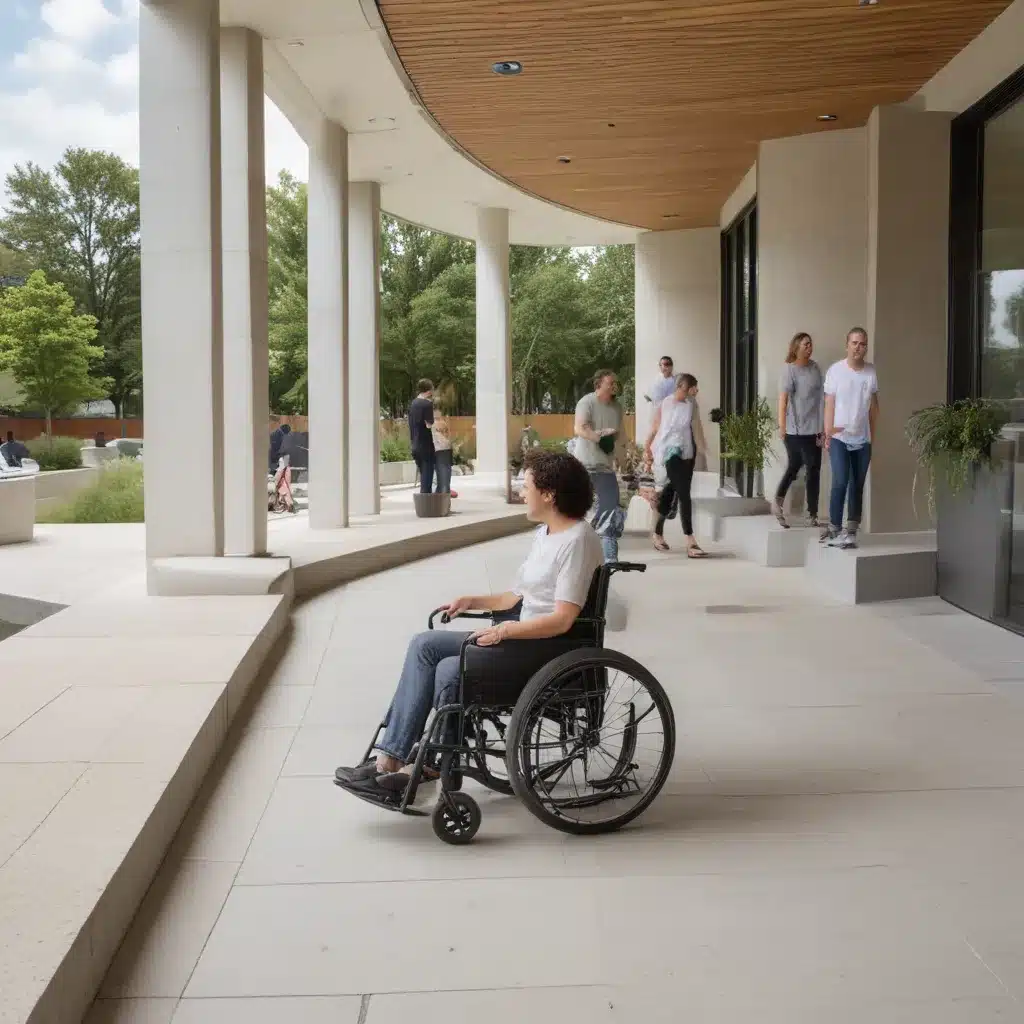
As the founder and managing principal at Studio Pacifica, an accessibility consulting firm, I’ve had the privilege of working with architects and builders to create barrier-free interiors that welcome everyone. And let me tell you, I’ve seen my fair share of design blunders that make me feel like an outcast in my own wheelchair.
Take the fast food restaurant, for example. I walk in, and suddenly I’m faced with a sea of tall tables and chairs – most of them immovable and secured to the ground. It’s a design choice that makes me feel completely unwelcome. How am I supposed to comfortably chat with friends or enjoy a meal when I can’t even reach the tabletop? It’s these kinds of oversights that highlight the importance of accessibility in the built environment.
Many people don’t have to think twice about navigating a building, but for those of us with disabilities, inaccessible spaces can be downright challenging and exclusionary. That’s why I’m on a mission to help design and construction teams create inclusive environments that cater to the diverse needs of all occupants – from the wheelchair user to the neurodiverse individual.
Beyond the Bare Minimum
Now, I know what you’re thinking – “But don’t we already have the Americans with Disabilities Act (ADA) and building codes that address accessibility?” Well, you’re absolutely right. The ADA has been a game-changer since its inception in 1990, outlining comprehensive standards for accessible design. And state building codes are often updated with even more progressive accessibility provisions.
However, as an accessibility expert, I can tell you that simply checking the ADA box isn’t enough. You see, when it comes to creating truly inclusive spaces, we need to look beyond the bare minimum and consult with disability advocates who can provide valuable insights from their lived experiences.
Tapping into Real-Life Perspectives
I often find that sharing my own personal examples helps design teams understand accessibility needs through a different lens. Take the restroom scenario I mentioned earlier – all the sinks and paper towel dispensers are the same height. Why do we do that? Humans come in different sizes and shapes, so why not cater to that diversity by having both low and high options?
By inviting people with disabilities to join the design process, we can uncover these kinds of pain points and develop solutions that truly meet the needs of all occupants. After all, accessibility should be part of the diversity, equity, and inclusion conversation. How can you claim to have built an equitable environment if someone in a wheelchair can’t even get through the door?
Adaptability is Key
Of course, navigating all the accessibility guidelines and building codes can be a daunting task. That’s where accessibility specialists like myself come in handy, helping to decode the regulatory requirements and identify innovative solutions.
One crucial aspect of creating accessible spaces is embracing adaptability in the construction process. If key interior components like walls, flooring, and doors are modular, it becomes much easier to modify the space as needed. This is especially important for existing buildings that may require updates to accommodate the changing needs of their occupants.
Designing for the “Us”
At the end of the day, my approach to accessible design is all about embracing an inclusive “us” perspective, rather than a “them” outlook. After all, anyone can join the disability community at any time, whether through illness, accident, or aging. So, when we design for accessibility, we’re not just creating spaces for “them” – we’re building environments that work for all of us.
That’s why I encourage design teams to think beyond the checklist and truly engage with the disability community. By collaborating with those who have lived experiences, we can create spaces that are not only code-compliant, but also fully inclusive and accommodating. And that, my friends, is the essence of accessible design done right.
Conclusion
Designing for accessibility may seem like a lofty goal, but I can assure you, the rewards are well worth the effort. When we build environments that cater to the diverse needs of all occupants, we’re not just creating inclusive spaces – we’re fostering a sense of belonging and empowerment that can truly transform lives.
So, let’s ditch the one-size-fits-all mentality and embrace the power of adaptability and choice. Because when it comes to design, accessibility isn’t just a legal requirement – it’s a moral imperative, and the key to unlocking a world where everyone can thrive.
















